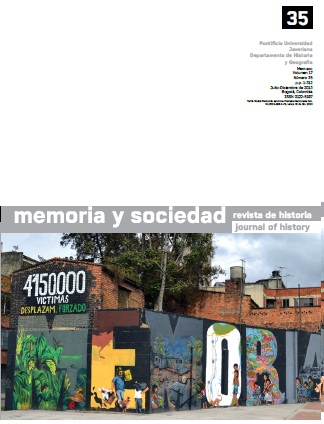Abstract
Nowadays the policies related with the historical memory and cultural heritage are at the heart of public debate in Colombia. The Victims and Land Restitution law from 2011 -one of the priorities of the Santos' government- is shaping a new official narrative about the horrors that have stained with blood the country. It is happening through a series of normative definitions of armed conflict, its duration, actors and victims. However, very little has been said so far about the emerging dispute regarding the control of the Colombian past in the public space of Bogotá. The article focuses on the history of the area where the Central Cemetery is located which now hosts Center for Memory, Peace and Reconciliation. The city of the dead is becoming the main stage to exhibit a national memory in which diverse conflicting historical perspectives fight each other for visibility.The journal Memoria y Sociedad is registered under a Creative Commons Attribution 4.0 International Public License. Thus, this work may be reproduced, distributed, and publicly shared in digital format, as long as the names of the authors and Pontificia Universidad Javeriana are acknowledged. Others are allowed to quote, adapt, transform, auto-archive, republish, and create based on this material, for any purpose (even commercial ones), provided the authorship is duly acknowledged, a link to the original work is provided, and it is specified if changes have been made. Pontificia Universidad Javeriana does not hold the rights of published works and the authors are solely responsible for the contents of their works; they keep the moral, intellectual, privacy, and publicity rights.
Approving the intervention of the work (review, copy-editing, translation, layout) and the following outreach, are granted through an use license and not through an assignment of rights. This means the journal and Pontificia Universidad Javeriana cannot be held responsible for any ethical malpractice by the authors. As a consequence of the protection granted by the use license, the journal is not required to publish recantations or modify information already published, unless the errata stems from the editorial management process. Publishing contents in this journal does not generate royalties for contributors.

